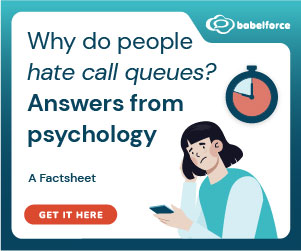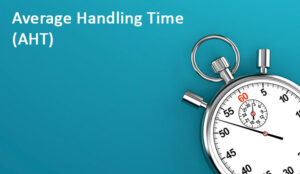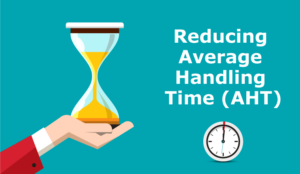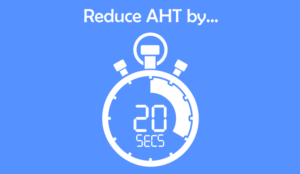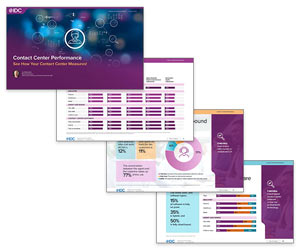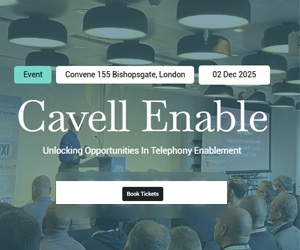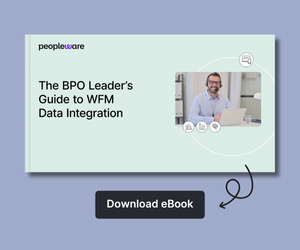Reducing Average Handling Time (AHT) is a key goal for any contact centre looking to improve efficiency and meet service level targets.
However, reducing AHT isn’t about rushing calls or cutting corners – t’s about optimizing processes, training advisors effectively, and removing unnecessary delays while still delivering great customer service.
To find out more, we asked Charlie Mitchell to share some of his favourite ideas for how contact centres can reduce Average Handling Time (AHT), many of which originate from the popular Call Centre Helper article: How to Safely Knock 20 Seconds Off Your Average Handling Time (AHT).
Video: 10 Tips to Reduce Average Handling Time (AHT)
Watch the video below to hear Charlie share some of his favourite ideas for how contact centres can reduce Average Handling Time (AHT):
With thanks to Charlie Mitchell for contributing to this video.
How to Reduce Average Handling Time (AHT) in the Contact Centre
AHT is typically broken down into three key components:
- Talk Time: The time spent conversing with the customer.
- Hold Time: The time a customer spends on hold.
- Wrap Time: The time spent completing post-call work.
Here are 10 safe and effective ways to reduce AHT while maintaining quality customer interactions.
Ways to Reduce Talk Time
1. Use Signposting
Signposting is a technique where advisors guide customers through the call by setting clear expectations.
By saying things like, “In a moment, I’ll need to take some details, including your account number,” agents help customers prepare information in advance, which streamlines conversations and reduces unnecessary delays.
For more advice on using signposting to reduce AHT, read our article: Signposting – Reduce Your Average Handling Time (AHT) by 15 Seconds
2. Implement Screen Pop Technology
Screen pop technology delivers key customer details to agents as soon as they receive a call, eliminating the need to search multiple systems.
This not only speeds up handling time but also enhances the customer experience by making interactions more seamless and personalized.
3. Create a Quality Focus Around AHT
Identify non-value-adding conversation elements that unnecessarily extend call duration.
Quality teams can analyse calls to spot redundant phrases, inefficient workflows, or ineffective questioning techniques. Coaching agents to refine their approach can lead to more efficient conversations.
Ways to Reduce Hold Time
4. Optimize Call Routing Strategies
Ensure that calls are directed to the most appropriately skilled agents using skill-based routing.
For example, passing calls to agents with specialized knowledge (e.g., customer retention or language skills) reduces unnecessary transfers and hold time, leading to faster resolutions.
5. Reduce Transfer Rates
High transfer rates often indicate gaps in agent training or inefficiencies in call routing.
By identifying common call types that require frequent transfers, contact centres can provide targeted coaching, update knowledge bases, and refine routing strategies to ensure customers are connected to the right agent the first time.
6. Lower Agent Attrition
High turnover leads to an influx of new, less experienced agents who typically have longer handling times.
Retain top talent by offering career progression opportunities, better shift flexibility, and recognition programs. More experienced agents handle calls more efficiently, naturally reducing AHT over time.
If you are looking for top tips and advice on reducing absence, agent burnout, and attrition, read our article: Tackle the 3 A’s – Absence, Agent Burnout, and Attrition
Ways to Reduce Wrap Time
7. Teach Agents Abbreviations and Shortcuts
Using standardized abbreviations and keyboard shortcuts can significantly speed up after-call work.
For example, instead of typing “customer,” agents can use “CUST,” or “delivery” can be shortened to “DLVY.” These small changes add up to major time savings.
8. Monitor for Agent Shortcuts and Tricks
Some agents may use wrap time as an opportunity for extra breaks or exploit loopholes like “sitting on a hanger,” where they don’t disconnect after a customer hangs up.
Regularly reviewing reports and using speech analytics can help identify and address these behaviours, ensuring wrap time is being used efficiently.
9. Implement After-Call Work Timers
Setting a reasonable time limit for after-call work can encourage agents to complete tasks efficiently.
Additionally, training advisors to complete some wrap-up tasks during natural pauses in conversations can help minimize post-call workload while ensuring they remain engaged when the customer is speaking.
Ways to Reduce Overall AHT
10. Use Quartile Analysis
Quartile analysis divides agents into four performance groups based on their AHT.
By examining the behaviours of the top-performing quartile (lowest AHT with high customer satisfaction), leaders can identify best practices and replicate them across the team.
Analysing these trends allows managers to coach lower-performing agents using real-world examples from their peers.
If you are looking for more great insights from the experts, check out these next:
- 10 Expert Tips for Call Centre Metrics
- 10 Expert Tips for Remote Working
- 4 Expert Tips for Your Contact Centre
- Understanding Shrinkage in Workforce Management
Author: Robyn Coppell
Reviewed by: Jonty Pearce
Published On: 5th Feb 2021 - Last modified: 25th Sep 2025
Read more about - Video, Average Handling Time (AHT), Call Handling, Metrics, Videos




